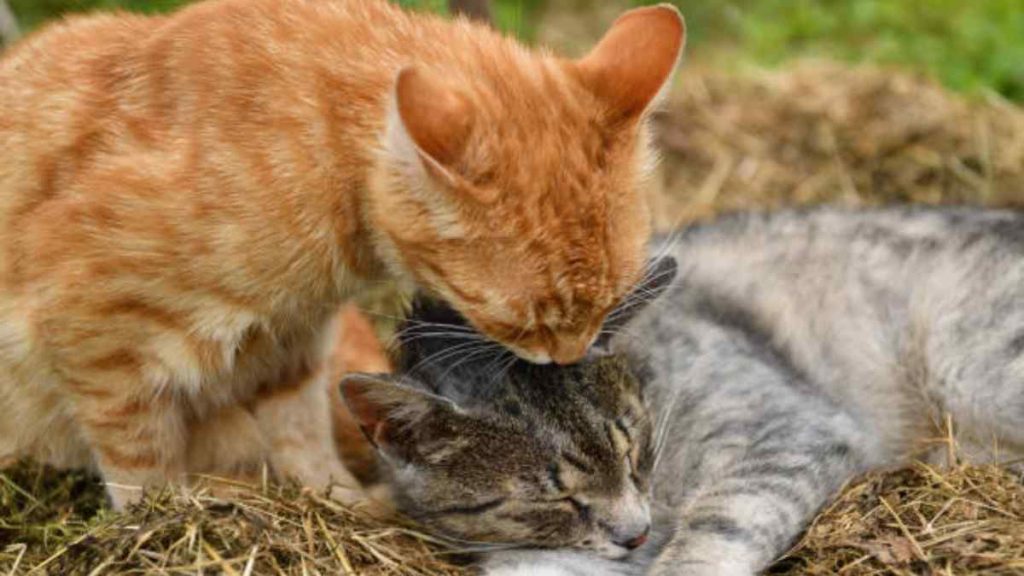Breeding cats is more than just pairing two felines together. It’s a journey that requires knowledge, responsibility, patience, and deep care for both the parent cats and their kittens. Whether you are a passionate cat lover aiming to become a responsible breeder or simply curious about the process, this guide will walk you through everything you need to know from preparation to caring for happy, healthy kittens.
Breeding, when done responsibly, can help preserve unique cat breeds and bring joy to families who welcome these kittens into their homes. But it also requires a deep understanding of genetics, feline health, and ethical practices. Many beginners underestimate the commitment and cost involved, which can lead to poor outcomes for both cats and kittens. That’s why this guide emphasizes responsibility first and foremost.
Why Cat Breeding Requires Responsibility?
Cat breeding is not a decision to be taken lightly. Unlike casual pet ownership, breeding involves:
- Ensuring genetic health: Avoiding hereditary diseases through testing.
- Maintaining breed standards: Preserving the characteristics of a specific cat breed.
- Providing lifelong care: Being prepared to look after kittens until they find responsible homes.
- Emotional investment: Being ready to deal with complications, losses, and challenges.
Responsible breeding means focusing on the health, happiness, and future of the cats — not just profit.
Preparing for Cat Breeding
Before starting, there are several critical steps to take:
1. Research the Breed
Different cat breeds have unique needs, temperaments, and potential health issues. For example:
- Persians: Prone to respiratory issues.
- Siamese: Active and social, but susceptible to dental problems.
- Maine Coons: Large in size, requiring careful monitoring of heart health.
2. Health Checkups and Genetic Testing
Both the male (stud) and female (queen) cats should undergo:
- Veterinary exams to confirm overall health.
- Vaccinations to protect against common feline illnesses.
- Genetic screening for hereditary conditions.
3. Age and Maturity
- Female cats should ideally be at least 12–18 months old before breeding.
- Male cats are usually ready by 8–12 months, but maturity varies.
4. Choosing the Right Mate
Consider:
- Compatibility in temperament.
- Avoiding close relatives (to prevent inbreeding).
- Strengthening the breed by selecting healthy, strong cats.
Understanding the Cat Breeding Cycle
Cats are seasonal breeders, and their cycles are influenced by daylight.
Heat Cycles in Female Cats
- Cats reach sexual maturity around 6–9 months.
- A female cat (queen) in heat will show behaviors like:
- Loud calling/meowing.
- Increased affection or rolling.
- Raising hindquarters when stroked.
Frequency of Heat Cycles
- Cats can go into heat every 2–3 weeks during breeding season.
- If not mated, they may repeatedly cycle, which can be stressful.
Male Cat Behavior During Breeding
- Male cats (toms) often mark territory more aggressively.
- They may become restless and show increased vocalizations.
The Breeding Process
When the queen is ready, she is introduced to the tom.
Courtship and Mating
- Mating is usually quick but may need several sessions.
- Queens often require multiple matings over a few days to ensure pregnancy.
- After successful mating, ovulation is triggered in the female.
Signs of Successful Mating
- The queen may:
- Roll around vigorously.
- Groom herself excessively.
- Show less interest in the tom afterward.
Pregnancy in Cats
Cat pregnancy typically lasts 63–65 days.
Early Signs of Pregnancy
- Increased affection.
- Enlarged, pink nipples (called “pinking up”).
- Slight weight gain.
Mid to Late Pregnancy
- Noticeable weight gain and a growing belly.
- Decreased activity as due date approaches.
- Nesting behavior: seeking quiet, comfortable spots.
Caring for a Pregnant Cat
- Provide nutritious, high-quality food (often kitten food for extra nutrients).
- Keep stress levels low.
- Ensure regular vet checkups.
Preparing for Birth (Queening)
Around the final week of pregnancy, prepare for delivery.
Setting Up the Nesting Box
- A clean, quiet, and warm space.
- Use towels, blankets, or disposable pads.
- Keep it away from high traffic or noise.
Signs of Labor
- Restlessness and nesting.
- Decreased appetite.
- Vocalization or purring.
- Temperature drop to around 99°F (37°C) within 24 hours of birth.
The Birth Process
- Kittens are usually delivered within 10–60 minutes
- The mother may eat the placentas (natural and safe).
- Litter size ranges from 1–8 kittens, average being 4.
Caring for Newborn Kittens
Immediate Needs
- Kittens are born blind and deaf.
- They rely on warmth, mother’s milk, and gentle handling.
First Few Weeks
- Kittens nurse every 2–3 hours.
- Keep them warm (newborns cannot regulate body temperature).
- Weigh them daily to ensure growth.
Socialization Stage
- At 2–3 weeks, kittens begin to open their eyes and ears.
- By 4–5 weeks, they start walking and playing.
- Early socialization with humans ensures friendly pets.
Health Considerations for Kittens
Common Concerns
- Fading kitten syndrome: Weakness or failure to thrive.
- Parasites: Regular deworming is essential.
- Respiratory infections: Monitor for sneezing or discharge.
Vaccinations
Kittens should begin vaccinations at around 6–8 weeks.
Weaning
- Begin introducing solid food at 4–5 weeks.
- Gradually reduce nursing until kittens are fully weaned by 8–10 weeks.
Nutrition During Breeding and Pregnancy
Nutrition plays a vital role in successful breeding and healthy kittens.
For the Queen
- Feed high-protein, nutrient-rich food.
- Transition to kitten food during pregnancy and lactation.
- Provide fresh water at all times.
For Kittens
- Start with softened kitten food around 4 weeks.
- Ensure a balanced diet of protein, fats, and vitamins for growth.
Finding Homes for Kittens
A responsible breeder ensures kittens go to loving homes.
Screening Potential Owners
- Ask about previous pet ownership.
- Ensure they understand lifelong responsibilities.
- Provide guidance on kitten care.
Timing of Adoption
- Kittens should not leave their mother before 12 weeks.
- This ensures proper development and socialization.
Common Mistakes to Avoid in Cat Breeding
- Breeding too young or too often: Risks mother’s health.
- Ignoring genetic testing: Can pass on diseases.
- Overbreeding: Leads to stress and poor health in queens.
- Selling too early: Kittens may develop behavioral problems.
The Joy of Cat Breeding
When done responsibly, cat breeding can be deeply rewarding. Watching kittens grow, thrive, and eventually find loving homes brings joy to breeders who truly care about feline welfare.
But it also requires acknowledging the challenges sleepless nights, unexpected expenses, and emotional stress when complications arise. Only breeders who are dedicated to the well-being of their cats can truly enjoy the rewards.
Quick Recap: Expert Tips for Happy Kittens
- Always prioritize health checks and genetic testing.
- Provide nutrient-rich food for both mother and kittens.
- Prepare a safe nesting area before delivery.
- Socialize kittens early for better adaptability.
- Never separate kittens from their mother too soon.
Final Thoughts
Cat breeding is a blend of science, patience, and love. By preparing thoroughly, caring responsibly, and prioritizing the well-being of your cats, you can ensure that your kittens are healthy, happy, and ready for their forever homes.
Remember, every decision you make as a breeder affects the lives of both the parent cats and their kittens. Choosing responsible practices ensures that your breeding journey is ethical and rewarding.
If you approach breeding with love and knowledge, you’ll not only nurture healthy kittens but also strengthen the bond between humans and their feline companions. That, ultimately, is the true joy of cat breeding.
Frequently Asked Questions About Cat Breeding
Q1. How much does cat breeding cost?
Cat breeding costs vary but can include vet visits, genetic tests, high-quality food, and emergency care. On average, expect $1,000–$2,500 per litter.
Q2. How many times a year can a cat safely breed?
A queen should not breed more than once or twice a year to protect her health.
Q3. Can I breed my cat without papers?
Yes, but it’s not recommended. Pedigree papers ensure that you’re breeding responsibly within the standards of a recognized breed.
Q4. What is the best age to spay or neuter kittens if not breeding?
Most vets recommend spaying/neutering around 5–6 months old.
Q5. Do cats need assistance during birth?
Most cats give birth naturally without assistance, but keep a vet’s number handy in case of complications.
Q6. Is breeding cats profitable?
While some breeders make money, true responsible breeding often involves more expenses than profit. It should be done for love of cats, not financial gain.
Q7. What are the risks of irresponsible breeding?
Health problems in kittens, genetic diseases, overpopulation, and abandonment are the main risks.


